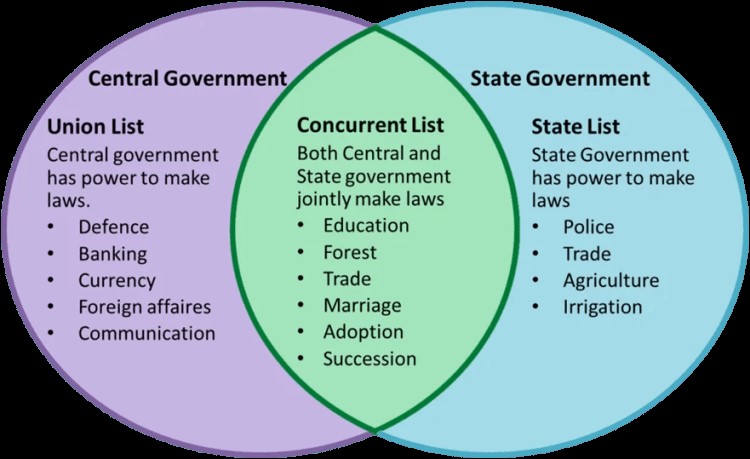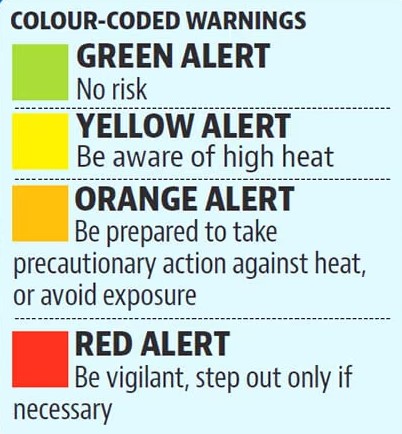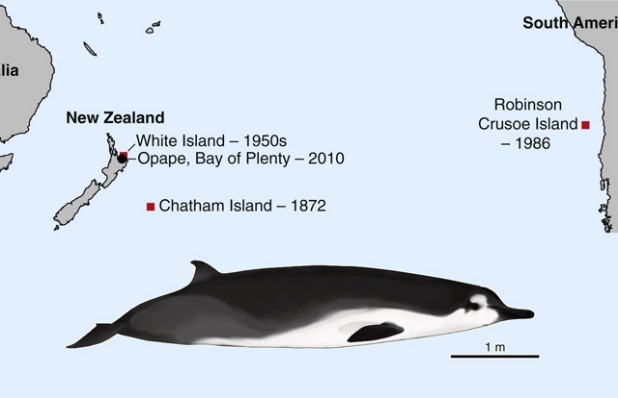- Home
- Prelims
- Mains
- Current Affairs
- Study Materials
- Test Series
July 16, 2024 Current Affairs
1. Money bills
- SC to consider setting up bench to hear pleas against passage of laws as money bills.
What is a Money bill?
- In India, a Money Bill is a type of legislation that relates to the appropriation of money from the Consolidated Fund of India, which is the main fund of the government.
- Money Bills are typically related to financial matters such as taxation, public expenditure, and public debt.

Major Provisions for Money Bill in India
- Only the Lower House (Lok Sabha) can introduce a Money Bill. This provision grants the Lok Sabha financial supremacy over the Upper House (Rajya Sabha).
- A Money Bill needs only a simple majority in the Lok Sabha for its passage. The Rajya Sabha can only recommend amendments to the Bill, but the Lok Sabha is not bound to accept them.
- The Speaker of the Lok Sabha has the power to certify whether a Bill is a Money Bill or not. This power is final and cannot be challenged in court.
- The Rajya Sabha has 14 days to consider and return a Money Bill to the Lok Sabha. If it is not returned within this period, the Bill is deemed to have been passed by both Houses.
- Once passed by the Lok Sabha, the Money Bill is sent to the President for his assent. He cannot withhold his assent to a Money Bill.
Significance of Money Bills
Deals with Financial Matters:
- They are specifically designed to address financial matters such as taxation, government expenditure, and related financial issues.
- Crucial for the effective functioning of the government and the implementation of its budgetary proposals.
Vote of Confidence:
- The passage of Money Bills is considered a de facto vote of confidencein the government.
- Its defeat in the Lok Sabha leads to the government’s resignation.
- The Lok Sabha can convey its dissatisfaction with the government by refusing to pass a Money Bill, indicating a lack of confidence.
Constitutional Safeguard:
- The Constitution provides broad guidelines regarding what constitutes a Money Bill.
- This ensures that it pertains exclusively to financial matters.
- It prevents the misuse of Money Bills for non-financial legislation.
Time-Bound Process:
- Money Bills must be disposed of within a specific time frame.
- Prevents unnecessary delays in financial decision-making.
- Ensures the government can efficiently carry out its financial responsibilities without prolonged legislative debates.
The issues pertaining to the misuse of the money bill:
- Evading scrutiny:Provisions of a money bill should not be used to bypass the legislative process or to evade the scrutiny of the Rajya Sabha.
- Aadhaar Bill Controversy:During the passage of the Aadhar Act 2016, Opposition has claimed that enabling a fair and equitable distribution of benefits and subsidies is not a money matter under Article 110. Hence, it has questioned the legality of the Aadhaar Bill as a money bill.
- Certifying Authority: There are allegations of partisan role by thespeaker through the sole discretion given to the speaker for certifying the bill as a money bill.
- Separation of Power :For instance, Finance Act 2017 was passed as a money bill. It amended various Acts to provide for new rules and appointments to various tribunals, such as National Green Tribunal.
- TheSupreme Court held that a money bill should not contain provisions that are not directly related to the subjects listed in Article 110 of the Constitution of India (which defines the subjects that can be covered by a money bill).
2. Will Union govt. shift education to State List, asks Stalin
7th Schedule
- The seventh schedule under Article 246of the constitution deals with the division of powers between the union and the states.
- It contains three lists-Union List, State List and Concurrent List.
- The union listdetails the subjects on which Parliament may make laws while the state list details those under the purview of state legislatures.
- The concurrent liston the other hand has subjects in which both Parliament and state legislatures have jurisdiction.

Why Should Education be on the State List?
- Original Constitution Design: Education was initially placed on the State List by the framers of the Constitution, recognising that local governments are better equipped to handle educational needs.
- 42nd Amendment Impact: The unilateral shift of education to the Concurrent List during the Emergency undermined the federal structure.
- Allowing states to have exclusive control over education would restore the balance of power envisioned by the framers of the Constitution.
- State-Specific Policies: States can tailor their educational policies to their unique cultural, linguistic, and socio-economic contexts. This ensures that education is relevant and responsive to the needs of the local population and can be crucial for improving literacy rates and educational outcomes.
- For example, under Article 350A endeavour should be made to provide primary education in the mother tongue.
- Divergent Policies: The central government''s policies, such as neet, often conflict with state policies, leading to inefficiencies and disenfranchisement.
- Resource Allocation: States that invest significantly in their educational infrastructure should have the authority to regulate and benefit from their investments without interference from the central government.
- The Ministry of Education''s 2022 report indicates that states bear the majority of educational expenditure (85%).
- Merit Determination: Centralized entrance exams like NEET do not necessarily reflect the merit or potential of students from diverse educational backgrounds.
- States should have the flexibility to design admission criteria that better assess and foster student potential.
Arguments for ''Education'' in Concurrent List
- Uniform Education Policy- Advocates argue for a unified approach to education across the country to improve standards and ensure consistency.
- Synergy Between Centre and States- Central coordination is seen as beneficial for aligning national goals with state-level implementation.
- Corruption and Lack of Professionalism- Critics cite concerns about inefficiencies and ethical issues within state-level management of education.
Way Forward
- Collaborative Federalism: Focus should be on a "Collaborative Federalism" approach as suggested by the Kothari Commission (1964-66).
- This ensures national minimum standards set by the Centre while allowing states flexibility in curriculum, language, and pedagogy.
- Outcome-based Funding: Implement outcome-based funding mechanisms as recommended by the NITI AAYOGin its Strategy for New India @ 75 document.
- This allocates resources based on learning outcomes, incentivizing states to improve educational quality.
- Decentralized School Management: Promote decentralised school management structures as envisioned in the Right to Education Act (RTE) 2009.
- This empowers School Management Committees (SMCs) with community participation, fostering local ownership and responsiveness.
- Teacher Training & Transfer Policy Reforms:Advocate for reforms based on the recommendations of the TSR Subramanian Committee Report (2009).
- This includes improved teacher training programs, transparent transfer policies, and performance-based incentives to create a more motivated and effective teaching force.
- National Curriculum Framework with State Adaptations: Develop a flexible National Curriculum Framework (NCF) as suggested by the NCERT, allowing states to adapt it to their specific linguistic and cultural contexts. This ensures a balance between national goals and state needs.
3. Colour- Coded Weather Warning
- Orange alert in 5 rain-hit districts of Kerala.
Colour- Coded Weather Warning:
IMD uses a color-coded weather warning system to alert the public about the severity and impact of various weather phenomena. The colour alerts issued by the IMD are as follows:
Green Alert (No warning):
- No weather warnings are expected in the near future.
- No action needs to be taken by the general public or disaster management authorities.

Yellow Alert (Be updated):
- Severe weather is possible over the next few days.
- The public should stay informed about the latest weather updates and warnings.
- Disaster management authorities should plan and prepare for any potential impact.
Orange Alert (Be prepared):
- The weather condition has the capacity to significantly impact people in the affected areas.
- This alert indicates a higher level of danger compared to the Yellow Alert.
- The public should prepare for rough weather and stay away from vulnerable areas.
- Disaster management authorities should be ready to handle any emergencies.
Red Alert (take action):
- Extremely severe weather conditions are expected.
- This alert indicates the highest level of threat and requires immediate action.
- The public should take all necessary precautions and follow the instructions of local authorities.
India Meteorological Department
- IMD was established in 1875.
- It is an agency of the Ministry of Earth Sciences of the Government of India.
- It is the principal agency responsible for meteorological observations, weather forecasting and seismology.
4. Cauvery dispute
T.N. govt. to hold all-party meet on Cauvery dispute
What is the Cauvery water dispute ?
The Cauvery Water Dispute is a dispute between the Indian states of Karnataka and Tamil Nadu, along with Kerala and Puducherry, over the sharing of the Cauvery River’s waters. It involves issues of water allocation and usage rights, with historical agreements, tribunals, and court rulings playing a significant role in its resolution.
Background
- This dispute originated for the first-time way back in 1892 at the time of Britishers between the Presidency of Madras and Princely state of Mysore.
- In 1924 Mysore and Madras reached into an agreement which will be valid for 50 years. Hence, it ceased to be enforced in 1974.
- Since 1974, Karnataka started diverting water into its four newly made reservoirs, without the consent of Tamil Nadu.
- This resulted in dispute in post independent India.
The establishment of the Cauvery Water Disputes Tribunal and its final decision:
- The Cauvery Water Disputes Tribunal (CWDT) was established in June 1990 in compliance with Section 4 of the Inter-State Water Disputes Act, 1956.
- The CWDT gave its final award in February 2007, after 17 years, outlining the amount of water that each state should receive at different times of the year.
- Given that the total available water in the Cauvery basin throughout the four states is 740 TMC in a normal year, the Tribunal has apportioned the water as follows:
- Tamil Nadu: 419 TMC (as opposed to 512 TMC),
- Karnataka: 270 TMC (as opposed to 465 TMC),
- Kerala has 30 TMCs, and 7 TMCs in Pondicherry
- The final award set aside 10 TMC for environmental purposes and 4 TMC for inevitable seawater exits.
- The tribunal ordered the formation of a monitoring authority to manage water releases.
- However, the final decision did not provide a specific methodology in circumstances where there is a water deficit owing to insufficient precipitation.
- It simply stated that in such cases, the assigned shares should be lowered accordingly.
How is water being Shared currently?
- Water sharing in the Cauvery River is regulated by a monthly schedule between Karnataka and Tamil Nadu. In a typical year, Karnataka must release about 177 TMC of water to Tamil Nadu from June to May, including about 123 TMC during the monsoon months from June to September. Disputes often arise during the southwest monsoon season when rainfall is below expectations.
The way ahead:
- Passing a law to empower tribunals to enforce decisions is crucial for quicker and more effective resolution of these disputes.
- In 2017, the Lok Sabha passed the Inter-State River Water Disputes (Amendment) Billto create a single permanent tribunal and a mediation committee, but the implementation has not yet been done.
- Allowing for water harvestingon a larger scale in both Karnataka and Tamil Nadu.
5. World’s rarest whale: spade-toothed whales
World’s rarest whale may have washed up on beach in New Zealand.
Spade-toothed whales are the world''s rarest, with no live sightings ever recorded.
Where do spade-toothed beaked whales live?
The three specimens of spade-toothed beaked whales were found in New Zealand and Chile and the species is thought to be found only in the southern hemisphere and possibly just in the South Pacific. However, the full extent of their distribution remains unknown.

The main threats to spade-toothed whales
- Noise pollution– Spade-toothed beaked whales are vulnerable to naval sonar and seismic activity.
- Bycatch– Entanglement in fishing gear is likely to be one of the predominant threats to this deep-water species.
- Plastic– stranded individuals of similar species have been found with plastic in their stomachs.









 Latest News
Latest News
 General Studies
General Studies